Born in the land of the rising sun, the Subaru WRX STI has got a brilliant back-story indeed. The ‘Rex, as it is fondly called amongst its legion of fans, can trace its roots back to early 1990s. Alongside its arch nemesis the Mitsubishi Lancer Evolution, it stood as one of the best street-homologated rally cars Japan had to offer.

The rally-bred street car truly came into its prime in the 1990s after the arrival of the Ford Escost RS Cosworth, but the decade’s biggest starts were undoubtedly the two Japanese names mentioned earlier, not forgetting Toyota as well with it Celica GT-Four series. Suffice to say if you were a car-loving teen in the 1990s, the Impreza WRX and its souped WRX STI variant was in your wish list of dream cars to own.

With that in mind, it is easy to see why cars such as the Subaru WRX STI is fast becoming an endangered species, with only a handful left in the hands of enthusiasts worldwide. However, when Malaysian Subaru cars distributors Motor Image Malaysia rolled out the latest iteration of the ‘Rex late in 2014, it seems all is not lost yet for the mighty ‘Rex and its fans, with many of which breathing a sigh of relief upon its launch.

Nevertheless, its aggressive stance is exuded fully thanks to the STI variant-specific traits such as the massive rear spoiler, the optional dark gun-metal alloys measuring 18-inches each, as well as those equally gargantuan Brembo rotors shod behind them at all four corners. Call it ‘over the top’ if you will, this is one car that can still stir trembling fear in the eyes of those who lay eyes on it for the first time.
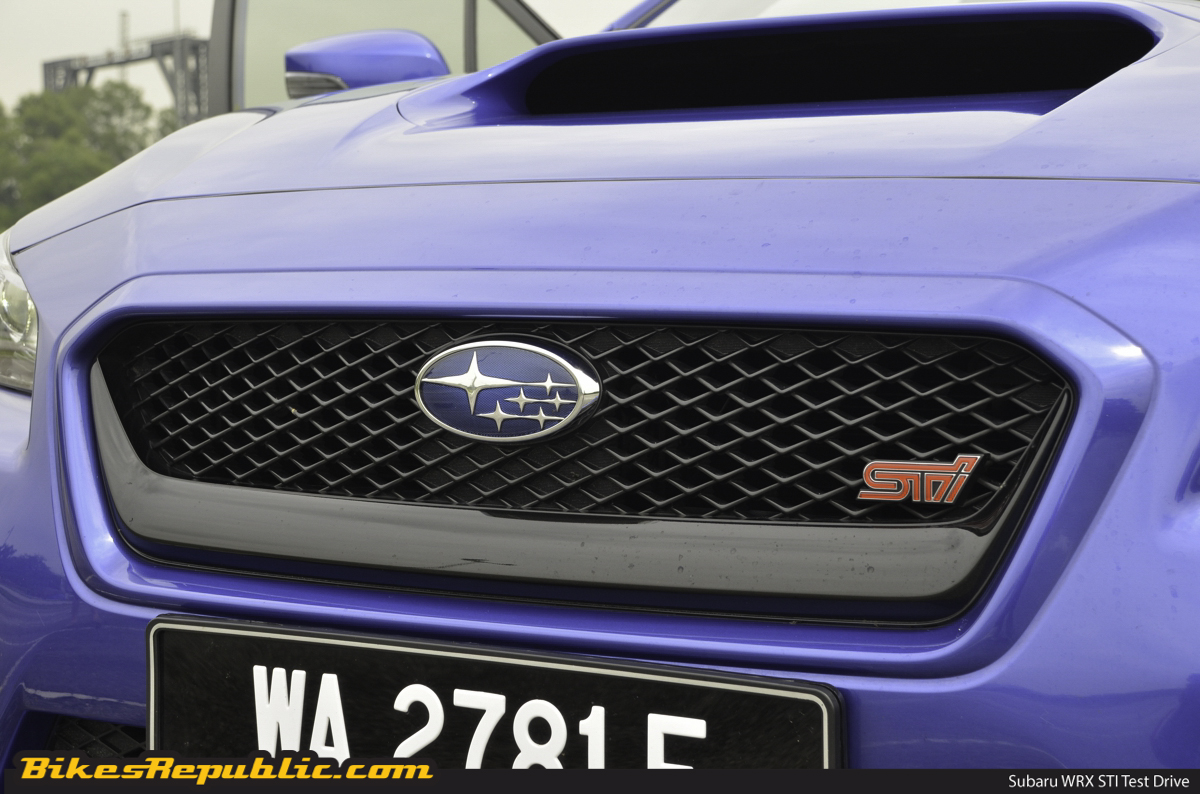
For many purists, the fun on board only comes when you push this fourth generation WRX STI’s engine start-stop button to awaken the fire-breathing heart sitting up-front under the hood. True, the ‘Rex’s turbocharged 2.5-litre DOHC horizontally-opposed or ‘boxer’ flat four-cylinder mill is indeed an ageing one, but even in an age that favours more intelligent mills, the ‘Rex’s heart is still quite a menacing thing as it makes a whopping 296hp and 407Nm of torque altogether.
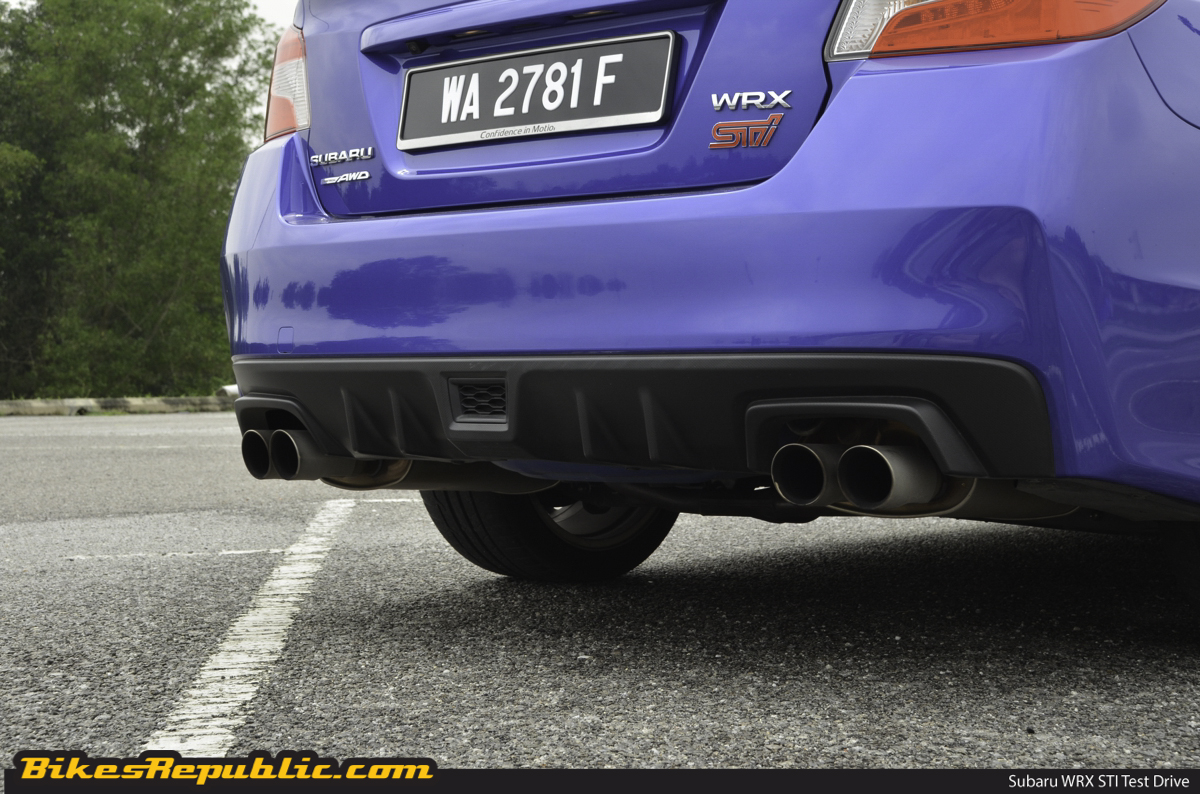
Typically, this port-injected turbocharged flat-four does lack a little in the lower rev-band. But get the needle past the 4,000RPM mark and this boxer is ready to shell out a heavyweight knock-out punch to propel all four wheels via the intelligent SI-DRIVE and DCCD multi-mode AWD and differential systems.

Of course, power is nothing without control, and this current generation ‘Rex has got plenty to offer its drivers in terms of passive and active electronic aids, plus a race-bred and proven chassis. Whilst the chassis is brilliant stiff and sharp – just as how any performance car should feel – it was the electric-assisted power steering that felt pretty off in our hands as it felt strongly artificial with the unnerving tendency to lighten its weight when you dial in some lock during corner entry. Nevertheless, it was easily forgiven as soon as you grasp the fact that it made driving the ‘Rex much easier when not on the limit.

What is truly brilliant about this high performance potential the ‘Rex holds is the fact that it is available in a decently practical four-door saloon with space to carry a few of your mates and an adequately large-sized boot to lug a sizable amount of cargo around. You simply cannot get this from an equalling European sports coupe that costs twice, sometimes three-times as much. And in case you were wondering, the ‘Rex STI also comes with several other creature comforts like automatic air conditioning and a crisp-sounding audio system that sweetens this car’s cause as a daily-driver even further.
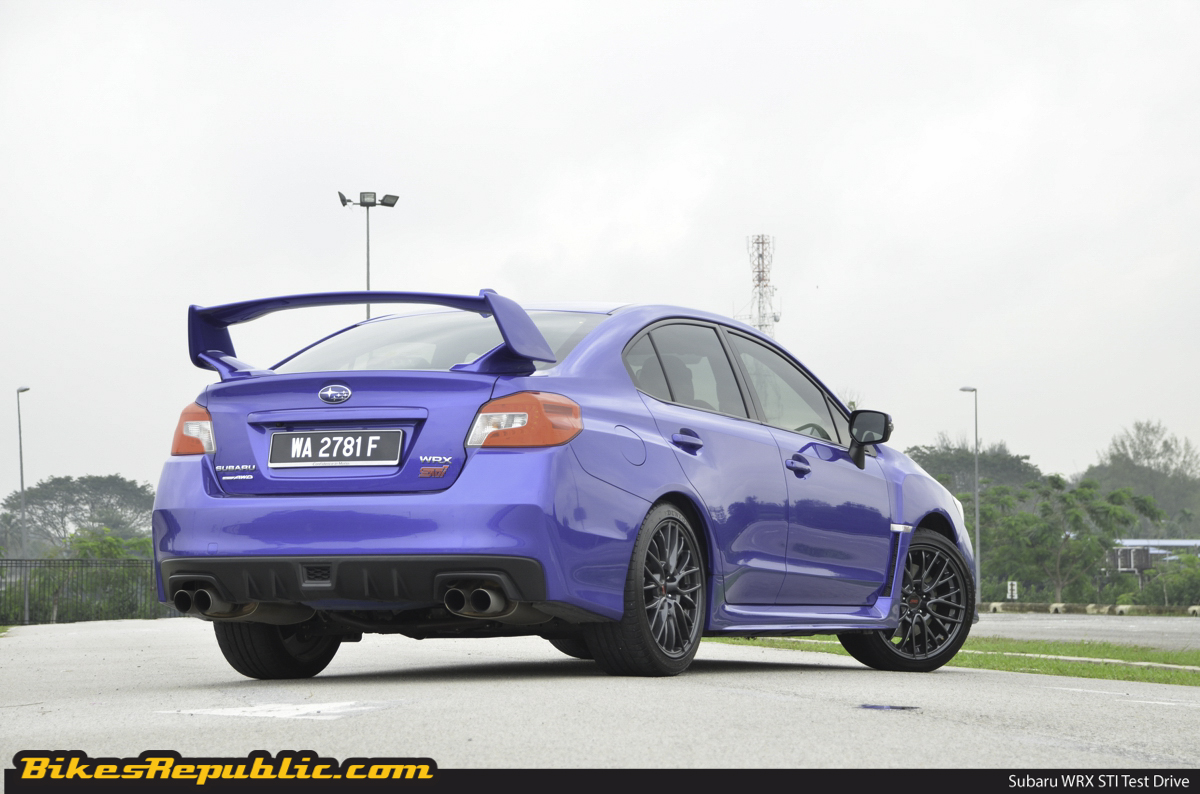
Call it steep if you will, said figure is still a bargain after taking into account that a European sports coupe with similar performance levels costs way more. And perhaps this is why some have regarded the Subaru WRX STI as the ultimate hero car amongst blue-collar driving purists worldwide.
| ENGINE |
|
| TRANSMISSION | 6-speed manual (MT) |
| POWER | 296hp @ 6,000rpm |
| TORQUE | 407Nm @ 4,000rpm |
| 0-100KM/H | 5.2 seconds |
| TOP SPEED | 255km/h |
| FUEL ECONOMY | 10.4 litres/100km (claimed) |
| PRICE | RM280,393.16 (6% GST + Road Tax & Insurance) |
| WARRANTY | 5-year or 100,000km (whichever comes first) |
| FROM | Motor Image Malaysia Sdn Bhd http://www.subaru.asia/my/en/home/ |
SEASONED readers would know by know that we are no strangers with the Honda CR-V crossover. Having driven both the pre-facelift and face-lifted model since its introduction, we found very little wrong with the fourth generation Honda CR-V, and it stands as one of our top favourites in the mid-sized crossover SUV segment.
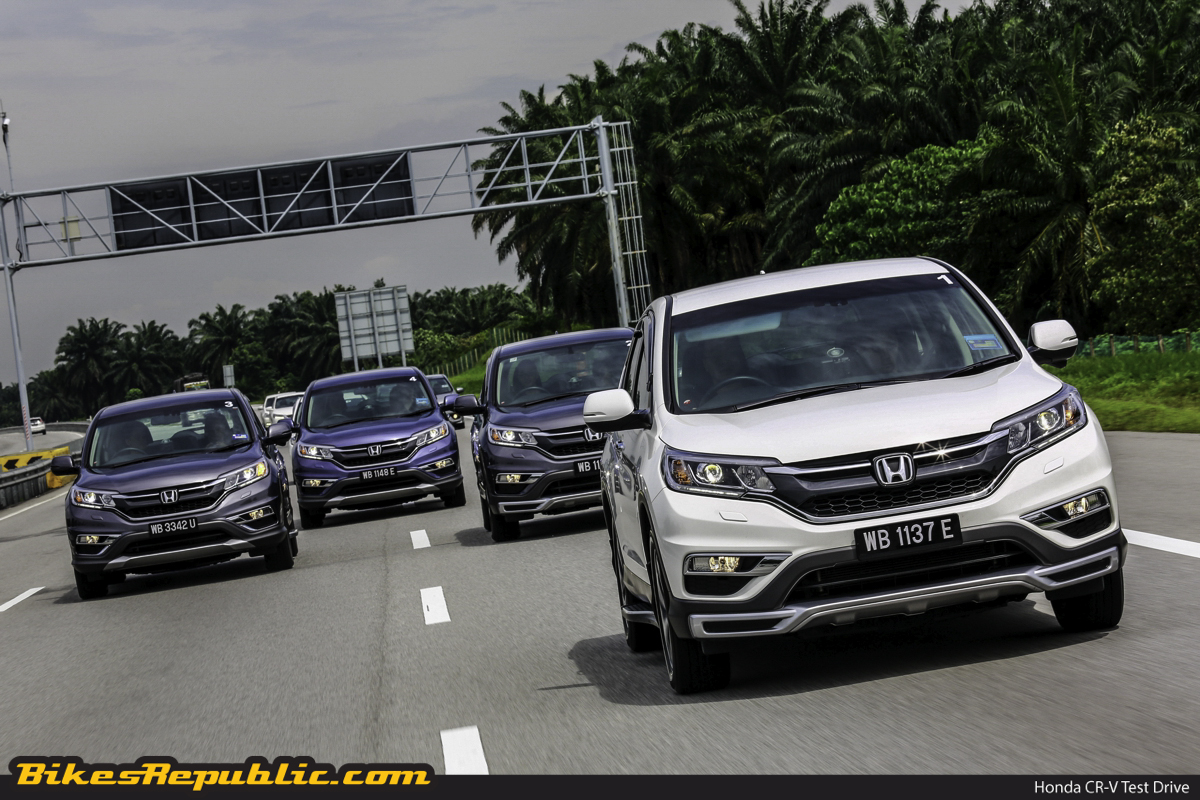
All it takes to understand this sort of buyer is a two-day roadtrip from Damansara to Port Dickson and back that covered not just the usual urban and highway roads, but also a series of twisty back roads and several stints of the beaten path. Honda’s rationale behind this was the fact that many of these individuals spend their weekends indulging in adventurous hobbies like watersports by the beach or a night out with nature in a campsite. Whilst this may sound like a job for a proper 4×4 SUV, the refreshed and all-wheel-drive-equipped variants of the CR-V we piloted in this seemingly rigorous two-day drive yielded some surprising results.
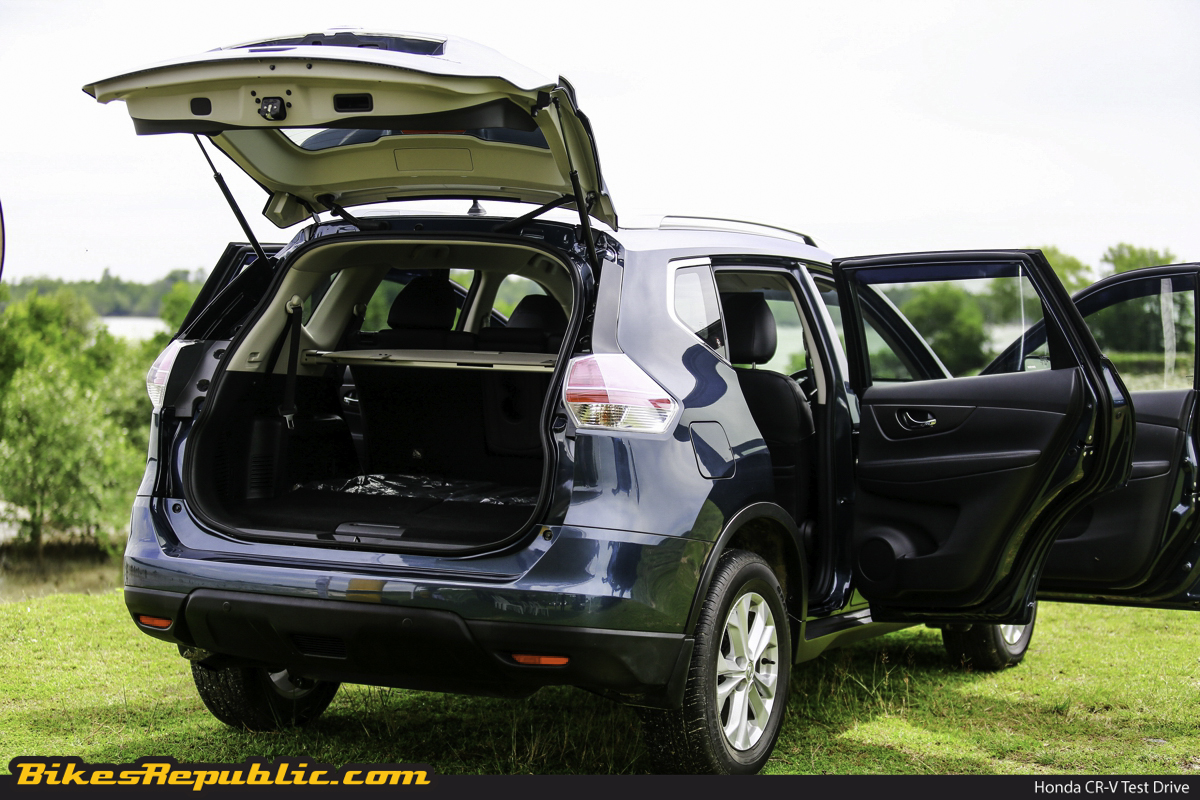
Though the base 2.0-litre front-wheel-drive model is the most frugal in the CR-V’s three-variant range at 7.7 litres/100km, the mid-spec’s 8.2 litres/100km and high-spec’s 8.5 litres/100km claimed fuel economy figures are respectable for a crossover of this size to say the least, meaning you’d still be able to cover a lot of miles at a lower costs with any of the three. But if we had to choose one, our top pick was of course the mid-range 2.0-litre AWD model as it offered the best compromise between base and range-topping model.
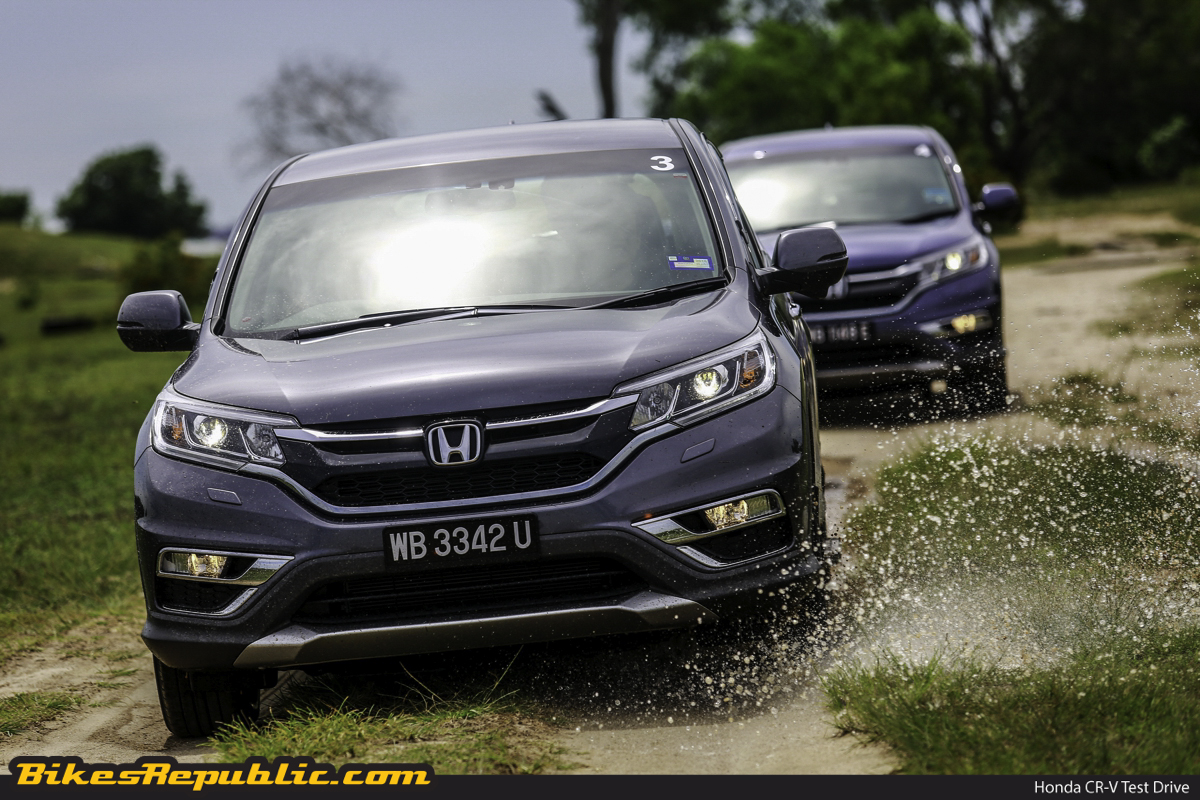
Despite these utilitarian abilities, the CR-V is still an excellent passenger car as well. Space all-round in the cabin is equally abundant too as it offers decent amounts of head, leg and movement rooms for just about anyone. For us though, we loved the signature and intuitive dashboard design and layout, not to mention the rich array of creature comforts primed here too.
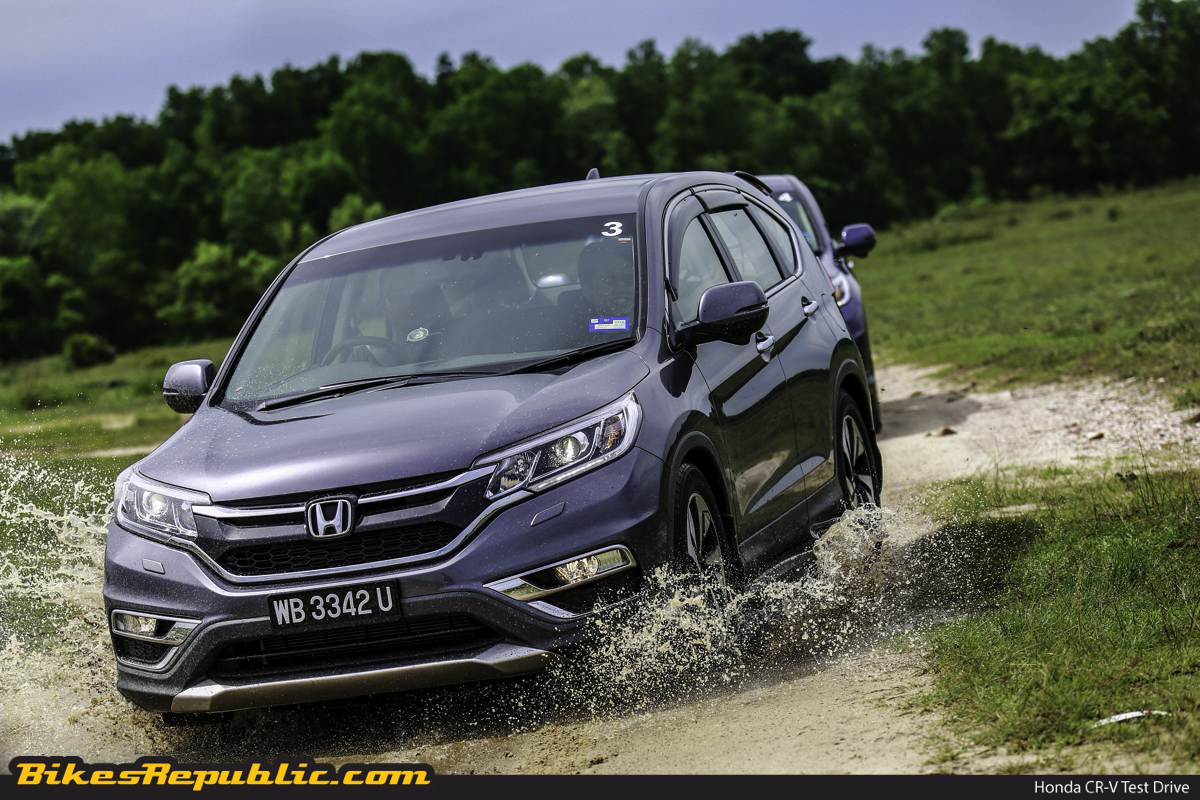
Then comes the way the CR-V drives, which is one of this crossover model’s top hallmarks. For a mid-sized crossover, the Honda CR-V felt decently agile when tackling a set of twisty back-roads leading up to Port Dickson via Sepang in our drive – perhaps a typical situation many active lifestyle individuals would face. While it is no Civic or Accord here, the crossover’s high-riding suspension and dampers felt well balanced whilst the electric power steering means that even ladies would have no trouble mastering it.
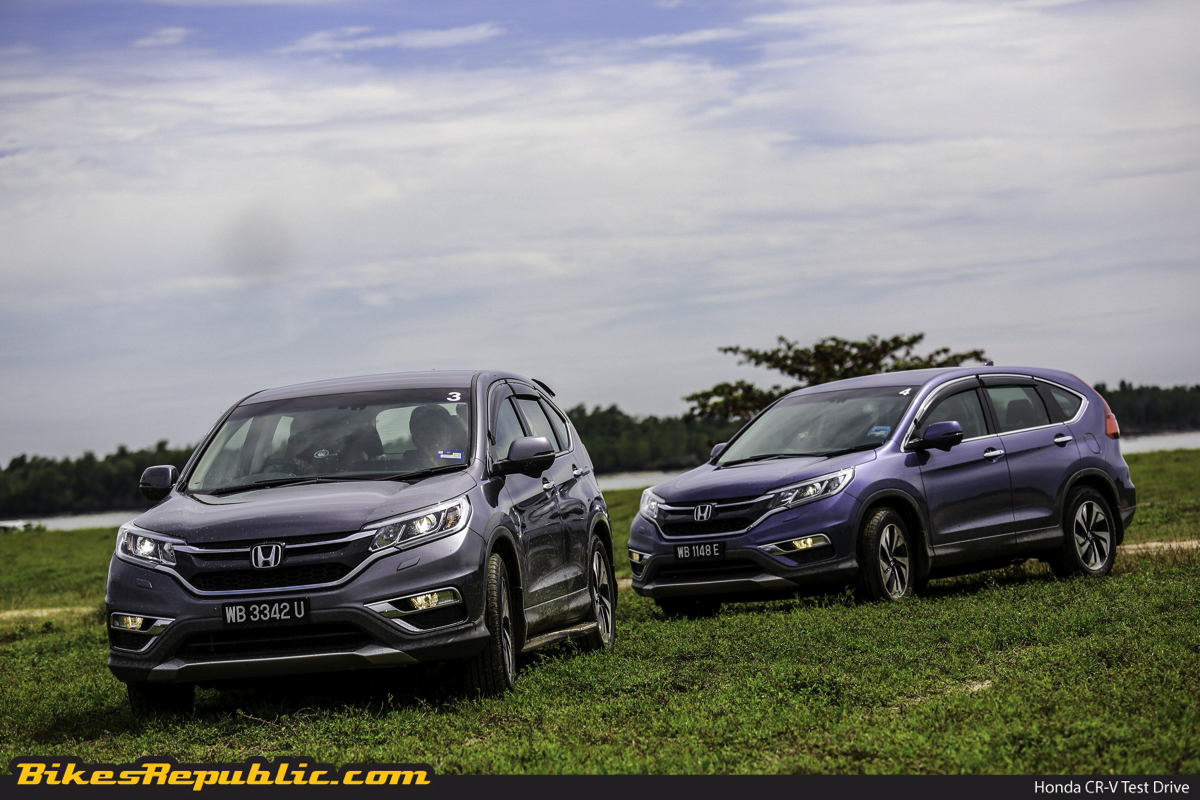
Truth be told, the CR-V wasn’t built to conquer serious off-road obstacles like steep gullies and deep ditches. But even when we charted across some soft beach sands and rough unpaved gravel roads like the ones leading in and out of Pulau Indah, Klang – apparently a hotspot for paramotor flights – the CR-V took them with great stride. The high-travel suspension meant that you could conquer these in high levels of comfort, and the only limiting factor here were the grip levels offered by the standard on-road tyres wrapped around its stylish 17-inch alloy wheels (18-inches for the range-topping 2.4-litre instead).
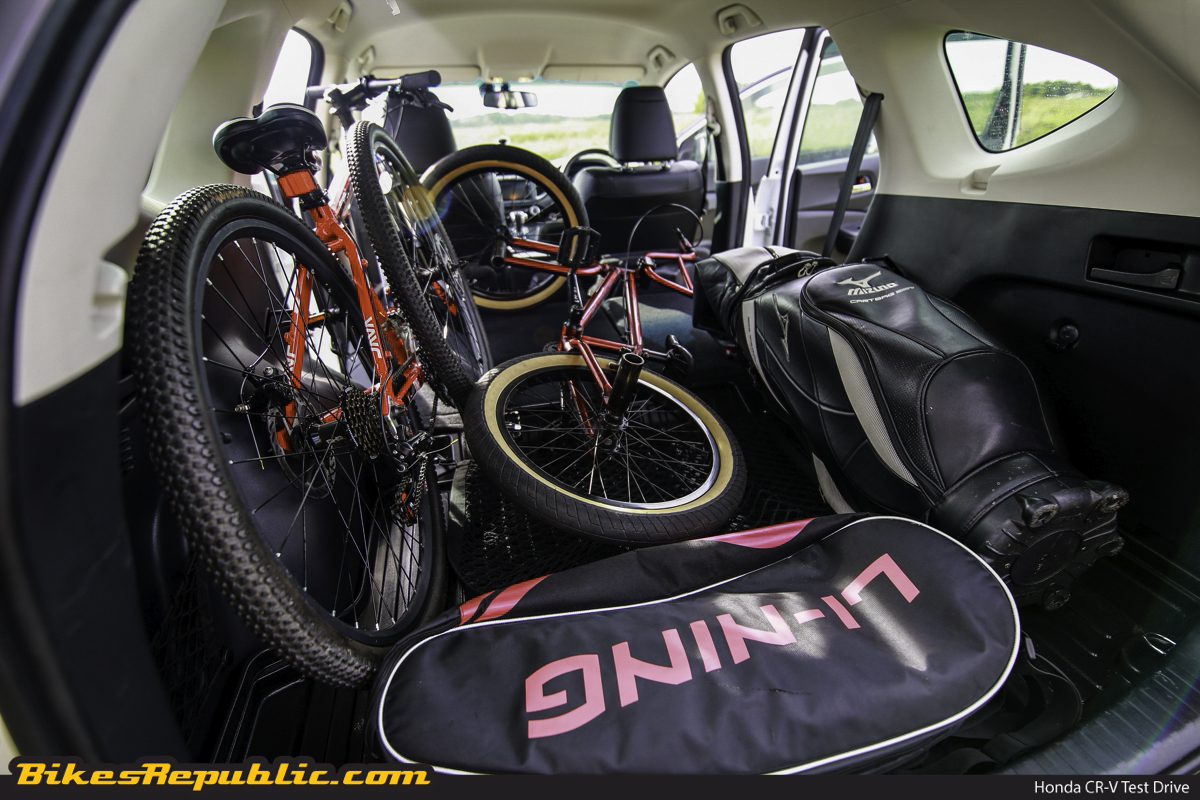
Practical, safe and surprisingly very capable, the Honda CR-V is not your average soft-roader indeed. Even for non-traditional buyers, this crossover’s ability to meet and exceed their demands is impressive to say the least. All that’s left is the question of whether one is willing to invest the money the AWD-equipped CR-V variants rightfully commands on-the-road – RM153,300 for the 2.0-litre and RM172,600 for the 2.4-litre.
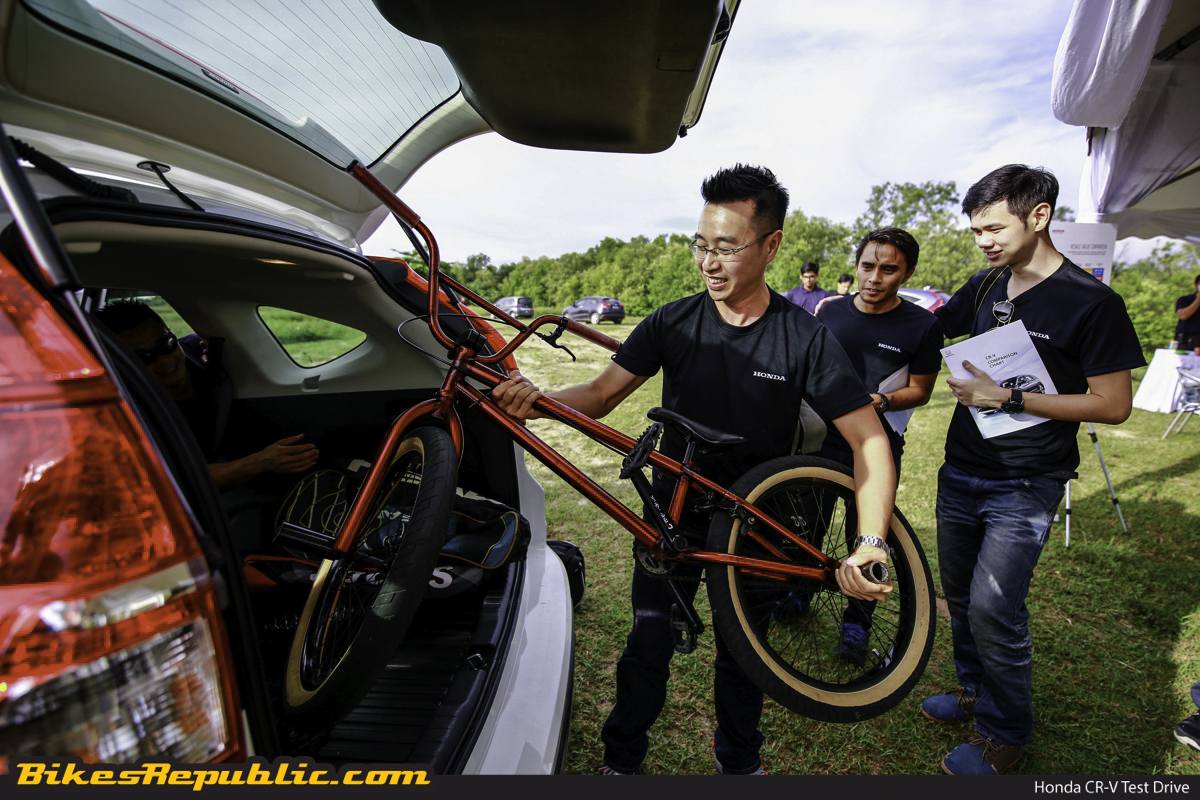
CRV Comparison click here
C-RV ResaleValue click here
WHEN it comes to the pickup truck segment, very few come close to the pre-facelift Ford Ranger T6 model in terms of performance, capability and desirability. But of course, it did not take long before the mighty Japanese brigade caught up with the blue oval marque, leading to the launch of two new rivals for the Ranger in our market last year.



Things don’t feel too bad either in the mid-range 2.2XLT variant despite the deletion of plush leather seat covers and the neat touchscreen. However, one aspect all variants particularly shine in is in the very low noise, vibration and harshness levels. Complementing that is the fact that Ford has also covered all the other basics perfectly in the lower-spec variants by having soft-touch materials lining the cabin in all the right places followed by the presence of a number of practical storage bins and cubbies.
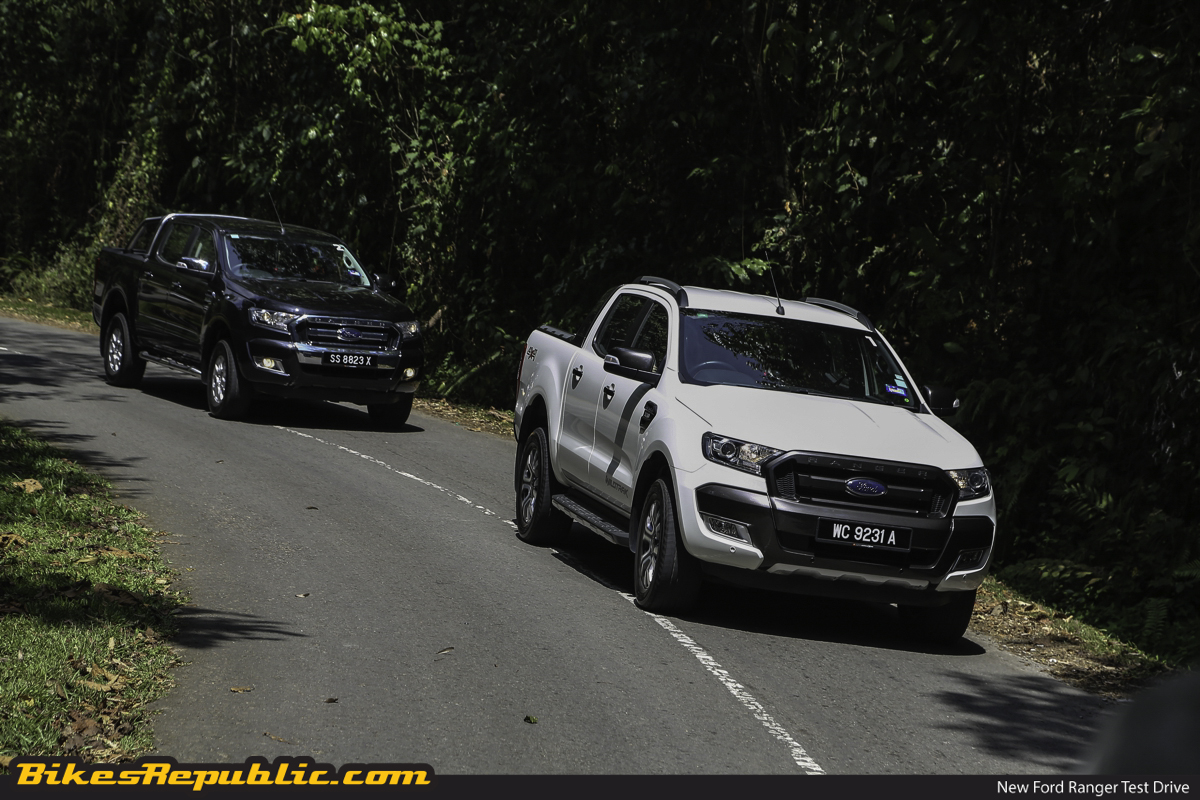
What felt equally brilliant here was the Ranger’s ride and handling. The new electric power steering has made the Ranger much easier to drive on road and on a daily basis as it is both lighter and more precise than the previous model’s system. The icing on the cake here though lies in the suspension and damper setup. Though it is the typical pickup truck setup of high-travel double wishbones up front and leaf springs in the rear, the dampers felt sublimely soft as it soaks up bumps and road imperfections effortlessly. And that comes without compromising too much on the Ranger’s off-road usability – a trait we discovered whilst enroute towards the Kinabalu National Park across both gravel paths and asphalt roads.
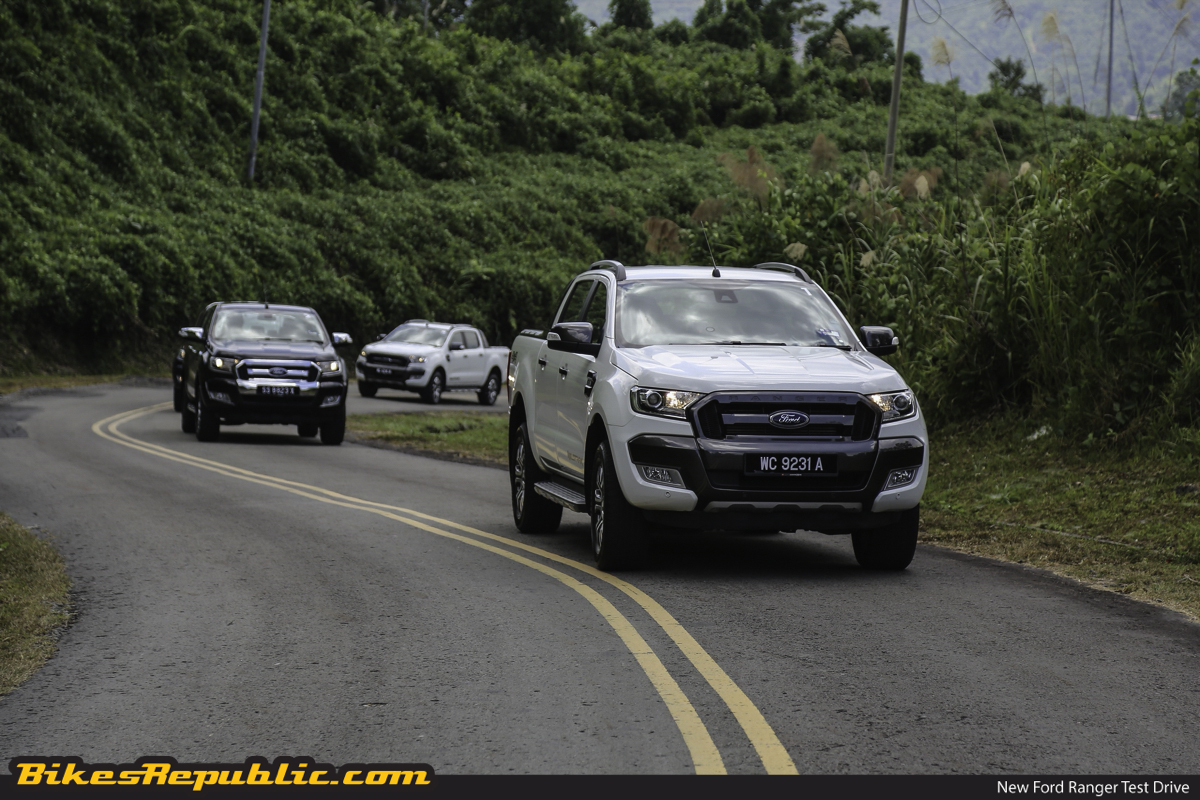
What really is a game changer is the advanced new active and passive safety features primed in the range-topping 3.2 Wildtrak. Highlights here include Lane Departure Warning and Assist, Forward Alert and Collision Mitigation system, as well as a Distance Indication Alert. Having tested all three features on the road whilst enroute back to Kota Kinabalu city, we can safely report that the revised Ranger 3.2 Wildtrak stands as the safest pickup truck money can buy in our market currently.
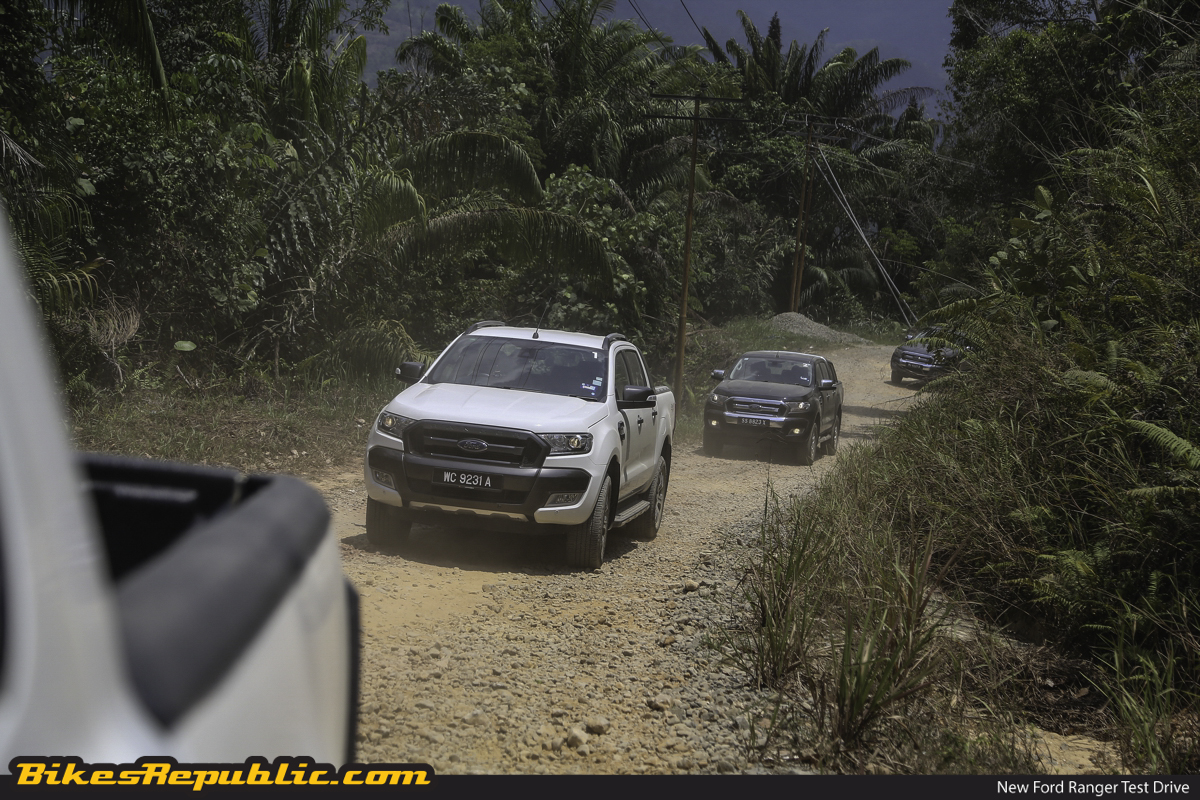
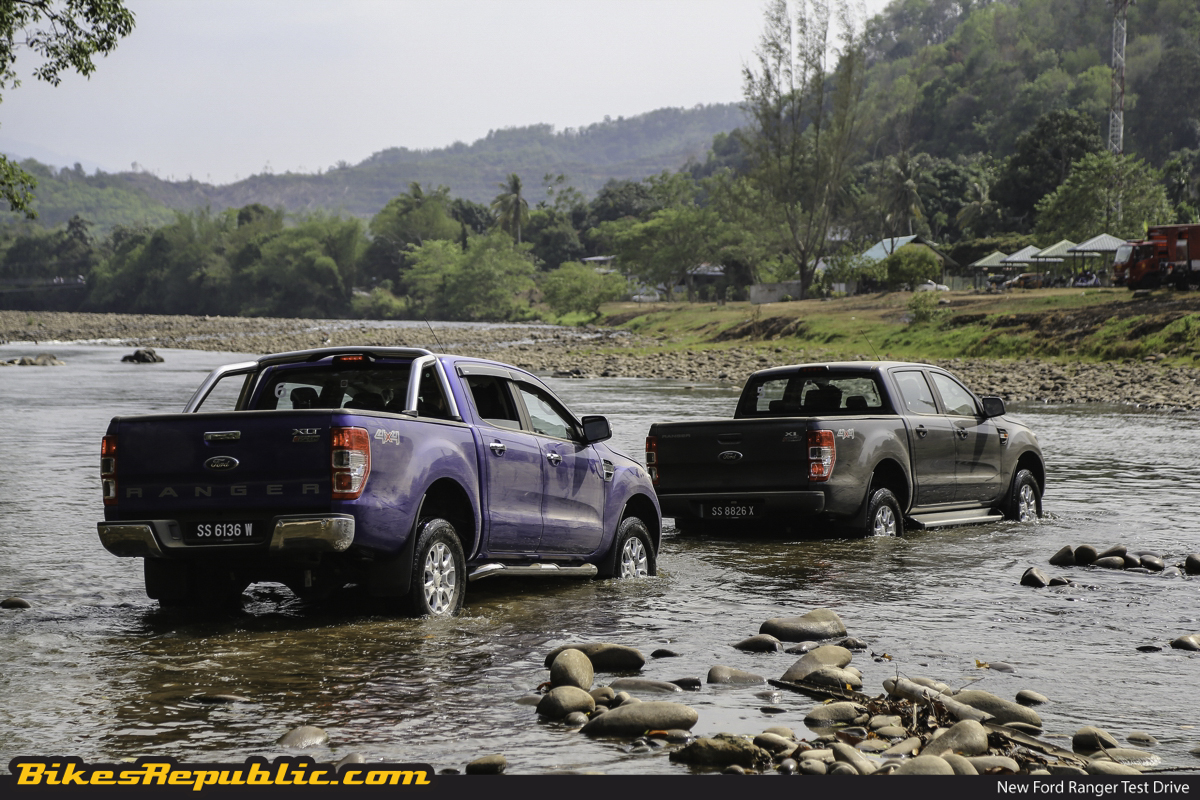
Though steep, the improved new Ranger’s outstanding capabilities, comfort and full spectrum of safety features are worth every single penny it rightfully commands. Said prices include SDAC’s offer of a three-year or 100,000km manufacturer’s warranty for added peace of mind.
| ENGINE |
|
| OUTPUT |
|
| TRANSMISSION |
|
| PRICES (OTR without insurance) |
|
| ENGINE |
|
| OUTPUT |
|
| TRANSMISSION |
|
| PRICES (OTR without insurance) |
|
Maranello’s famed prancing horse badge is perhaps one of the most celebrated sports car marques in history. Though fames for making some of the planet’s most coveted race-bred performance sports cars, Ferrari has indeed produced some of the greatest grand touring cars of all time too, with the brand’s new California T fast becoming one of the latter in recent times.
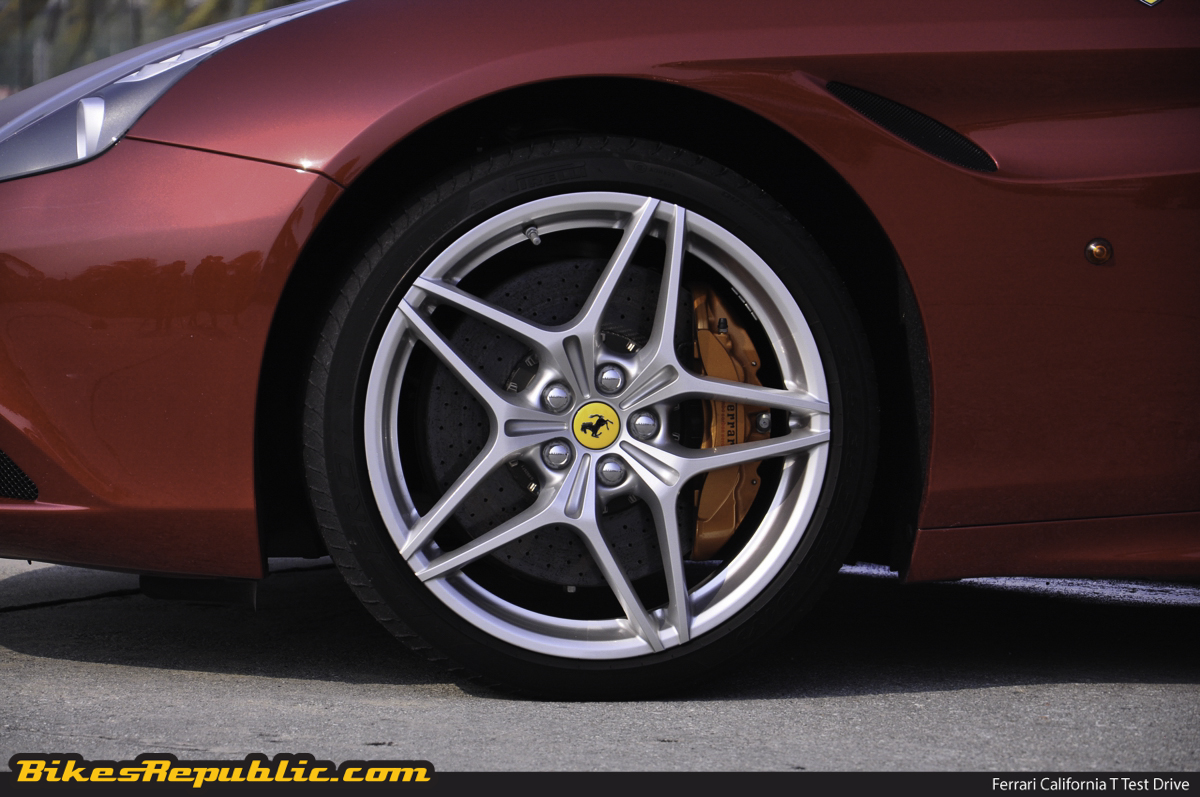
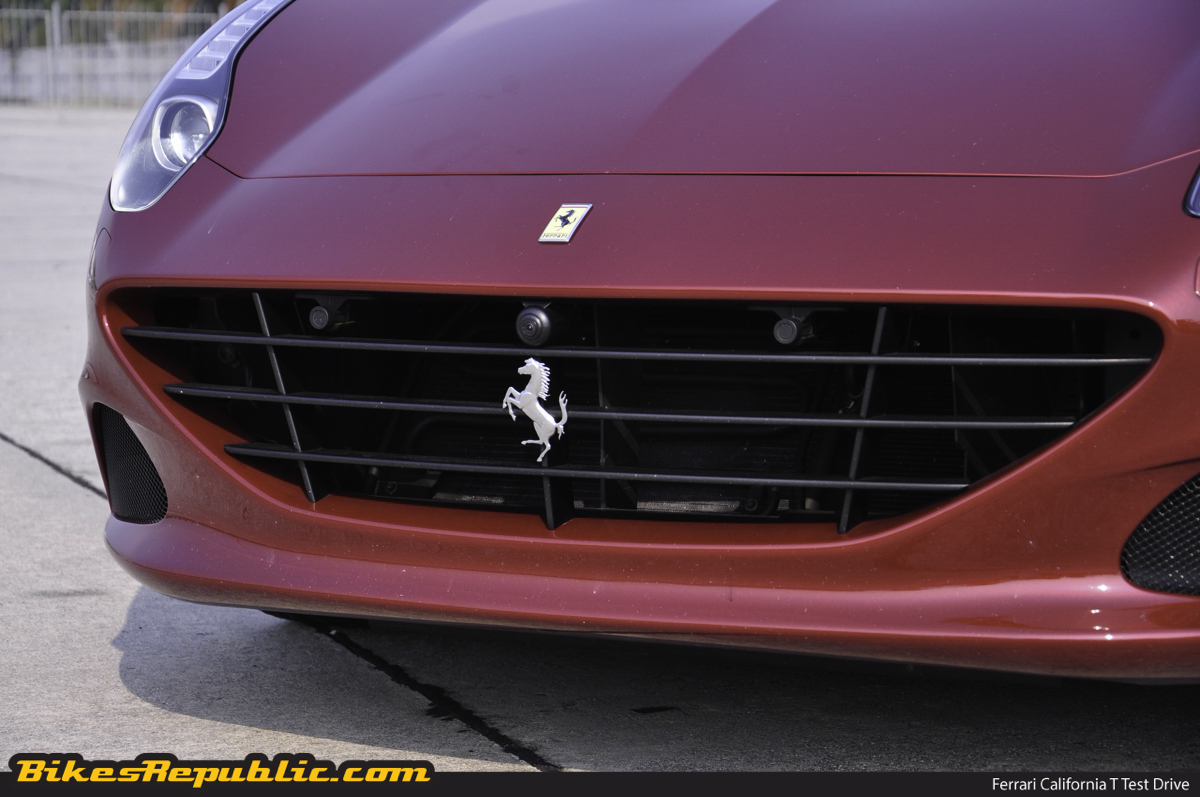
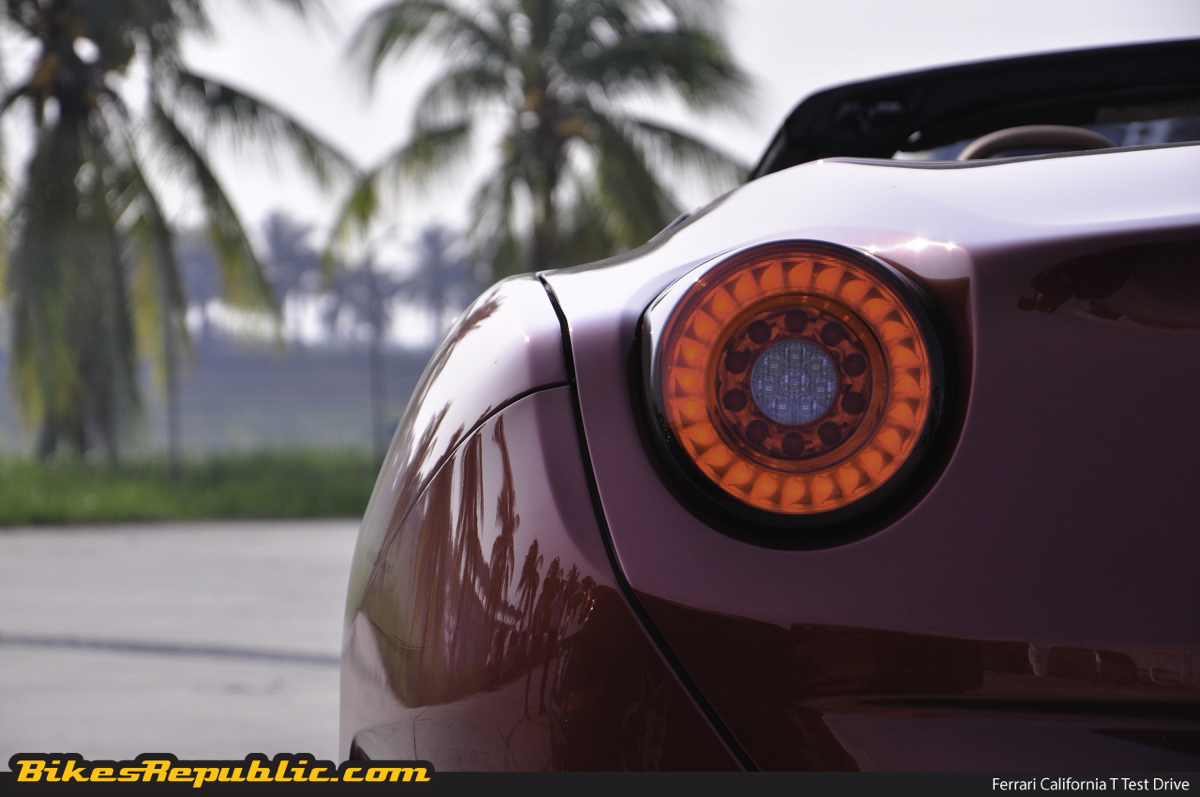
Whilst the exterior styling did not win as many hearts as its predecessor did, it is still quite a looker in our eyes. We love the traditional yet sleek styling penned by Pininfarina, and it still looks fit for a cruise down the scenic coastlines roads of Italy or Southern France.
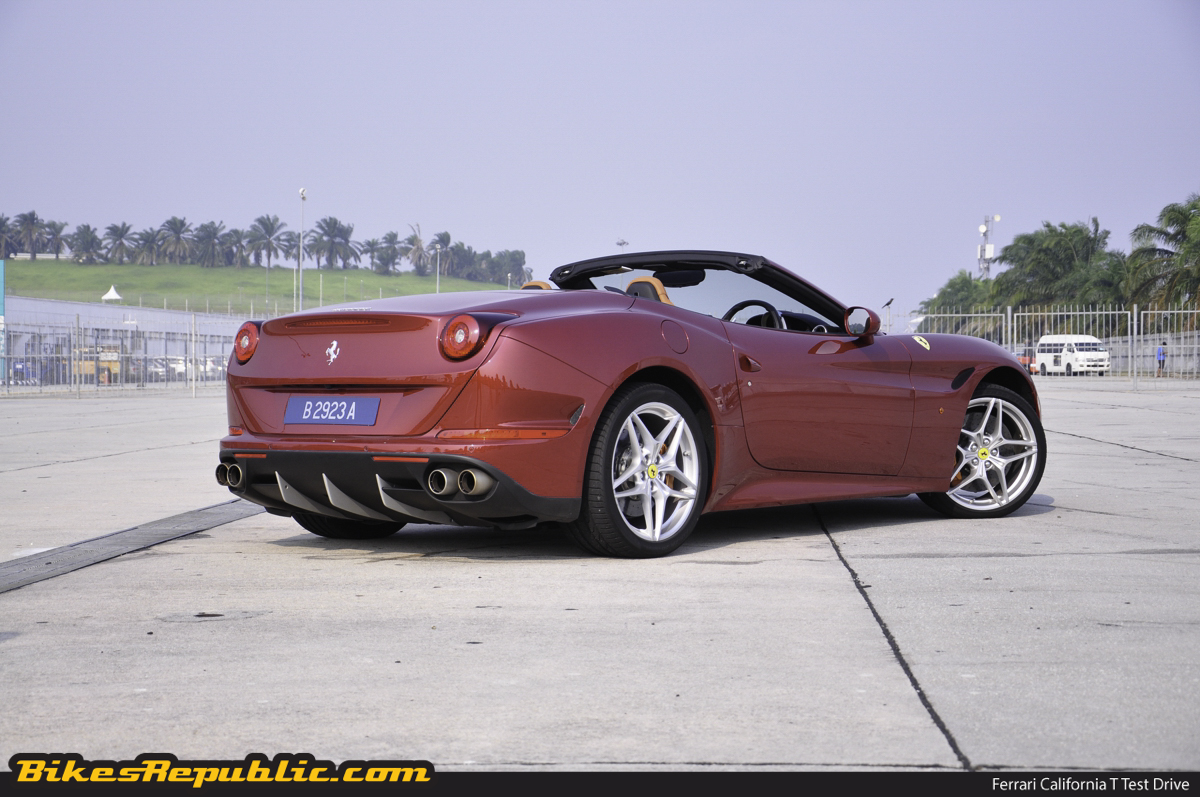
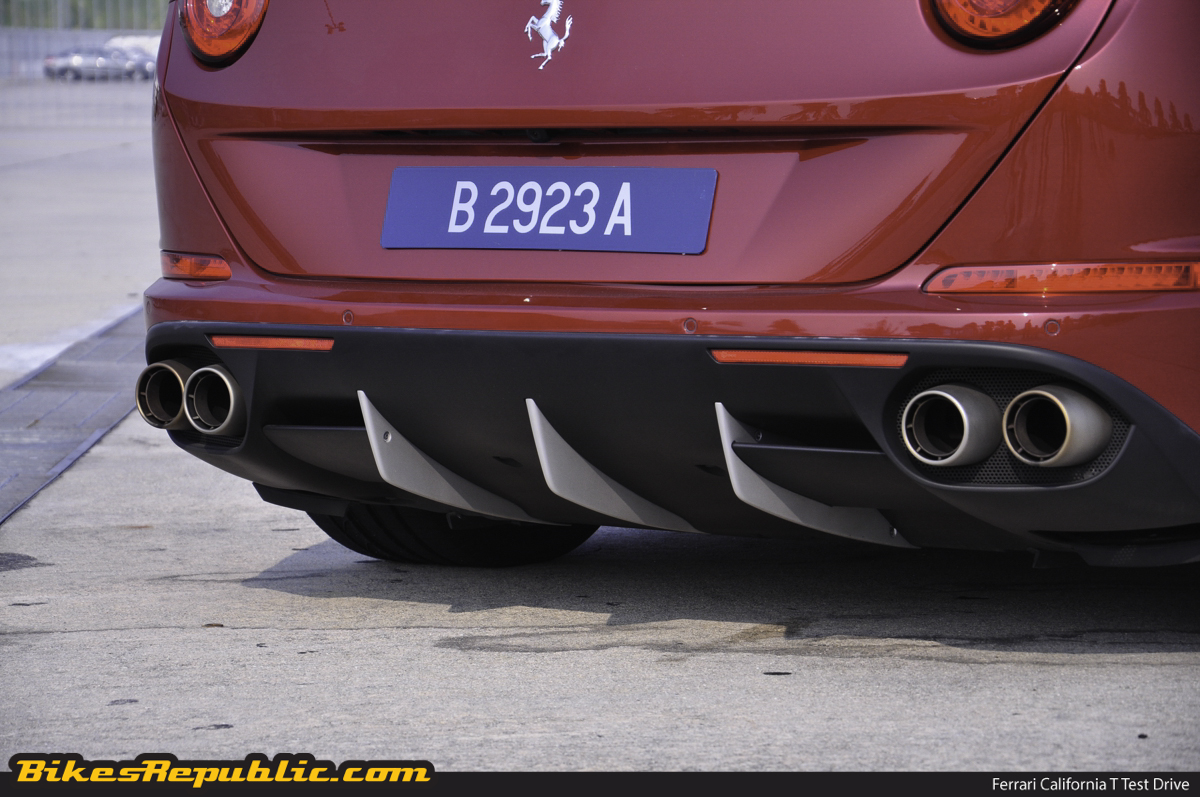
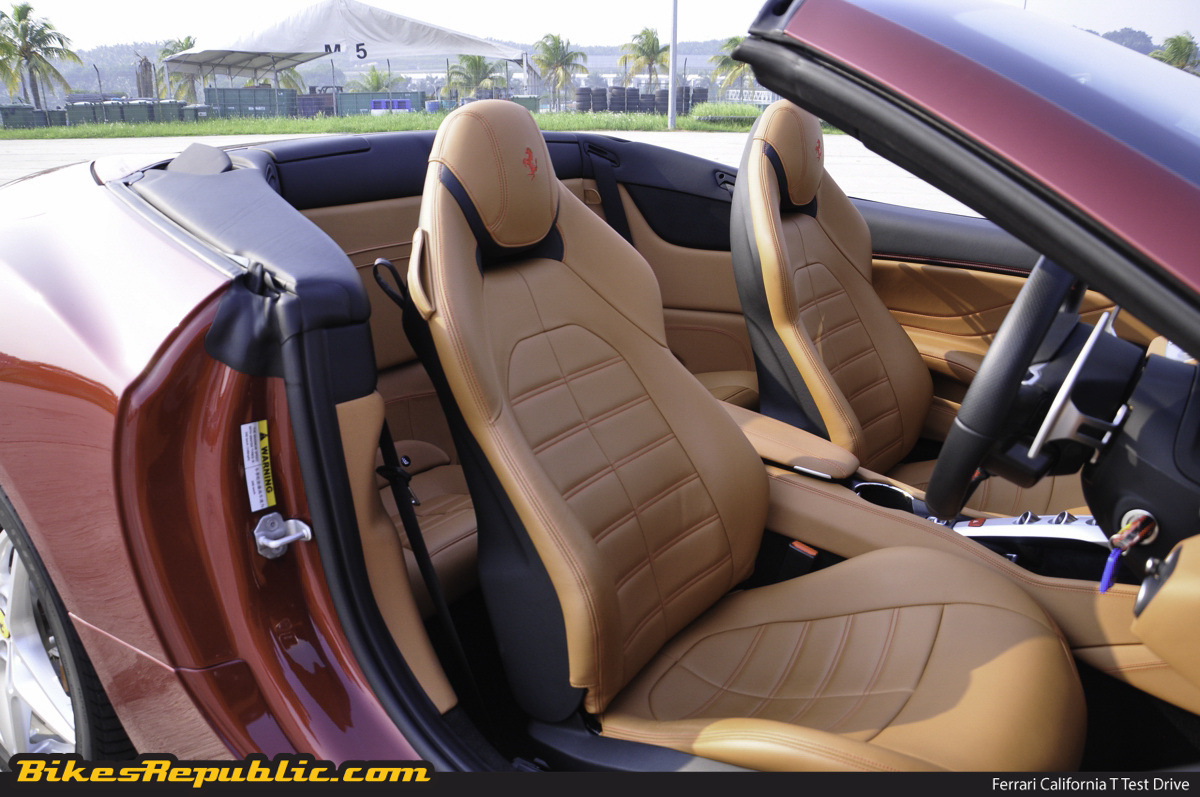
Ferrari opted to go down the turbocharged route as a means of adapting to strict emissions restrictions in Europe, with the trend these days favouring lower displacement with force induction. Though it has shrunk in size slightly, the new mill is indeed more powerful than the one replaces, but more importantly, it is much greener as well thanks to the presence of automatic idling stop-start and an intelligent transmission as well.
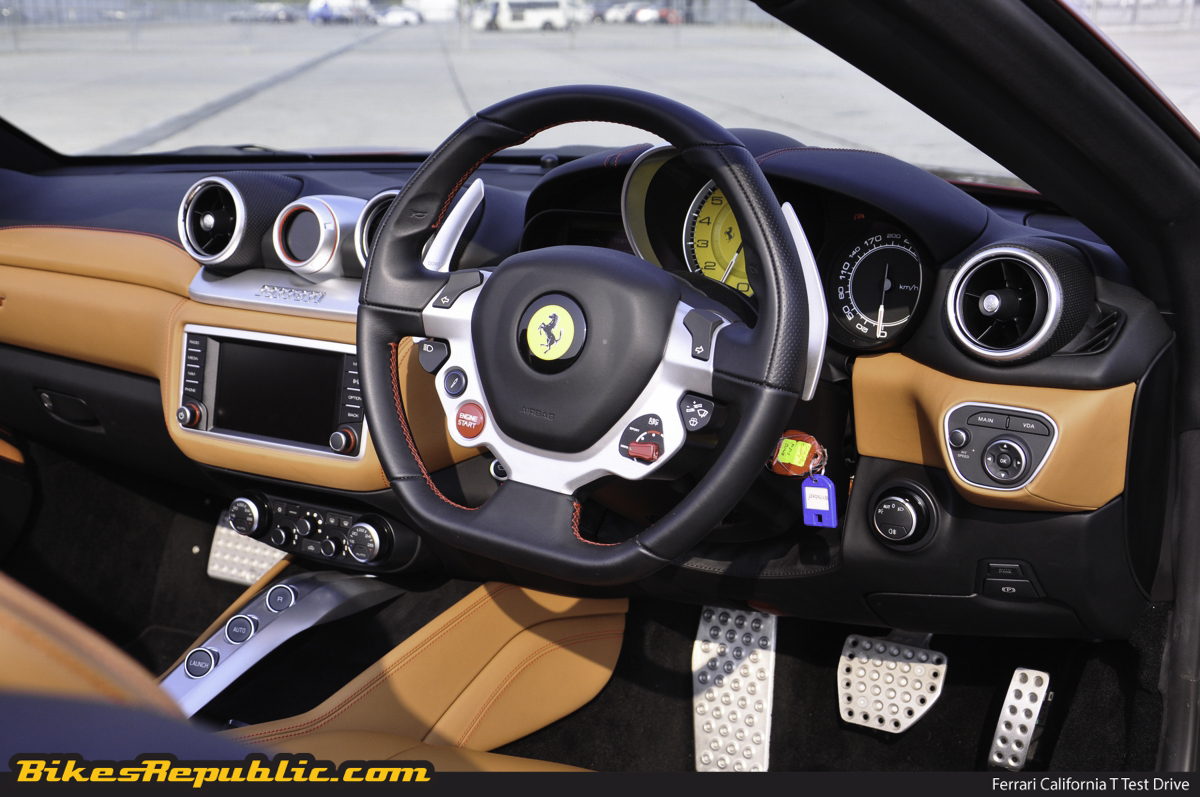
All power generated my the twin-turbo V8 is sent to the rear wheels via a revised version of Ferrari’s seven-speed dual-clutch transmission (DCT), which is paired with Ferrari’s CST and F1 TRAC stability and traction control suites. The powertrain grants the California T with an impressive century sprint time of 3.6 seconds, whilst the claimed top speed stands at 315km/h.
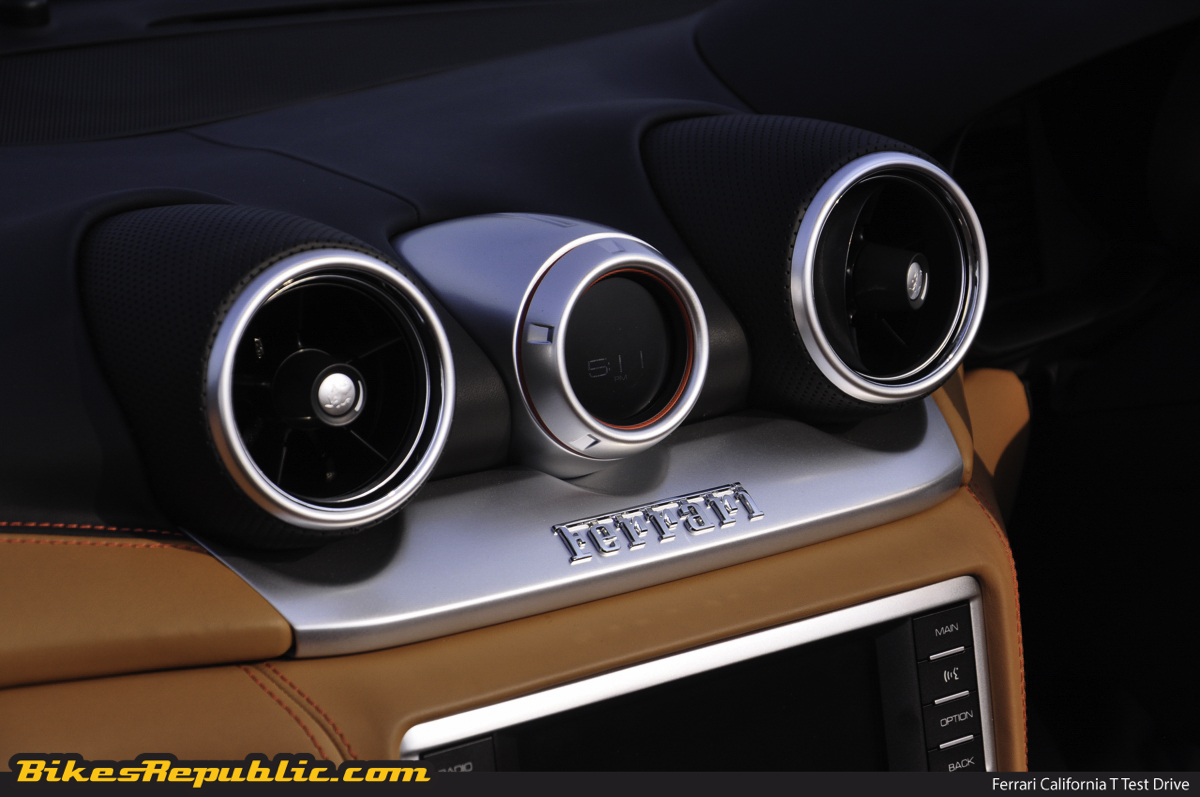
What complemented this in full was the California T’s highly engaging driving dynamics and chassis. Amongst the many electronic wizardries primed on board the California T, the most crucial contributors to its dynamic feel are the Manettino driving mode selector tailored for Ferrari by Magnetti Marelli, followed by the Magnaride adaptive suspension suite as well.

With this mode, the magnetic adaptive suspension works overtime in granting the most comfortable ride possible, with the system actively adjusting the suspension travel rate and dampers in milliseconds. This is the mode you want engaged when enjoying a drive down a scenic coastal road.
However, things quickly change once you flick the Manettino into ‘Sport’ mode. Here, the throttle sensitivity is sharpened, the DCT’s shift points re-optimised, followed by the increased weight in the steering wheel.
This mode also sees the active suspension and dampers firming itself up, where it almost eliminates the noticeable body roll in ‘Comfort’ mode, offering a much stiffer ride as well. In this mode, the California T is fully re-optimised for you to conquer a stretch of twisty and windy B-roads, inspiring lots of driving confidence here as well.
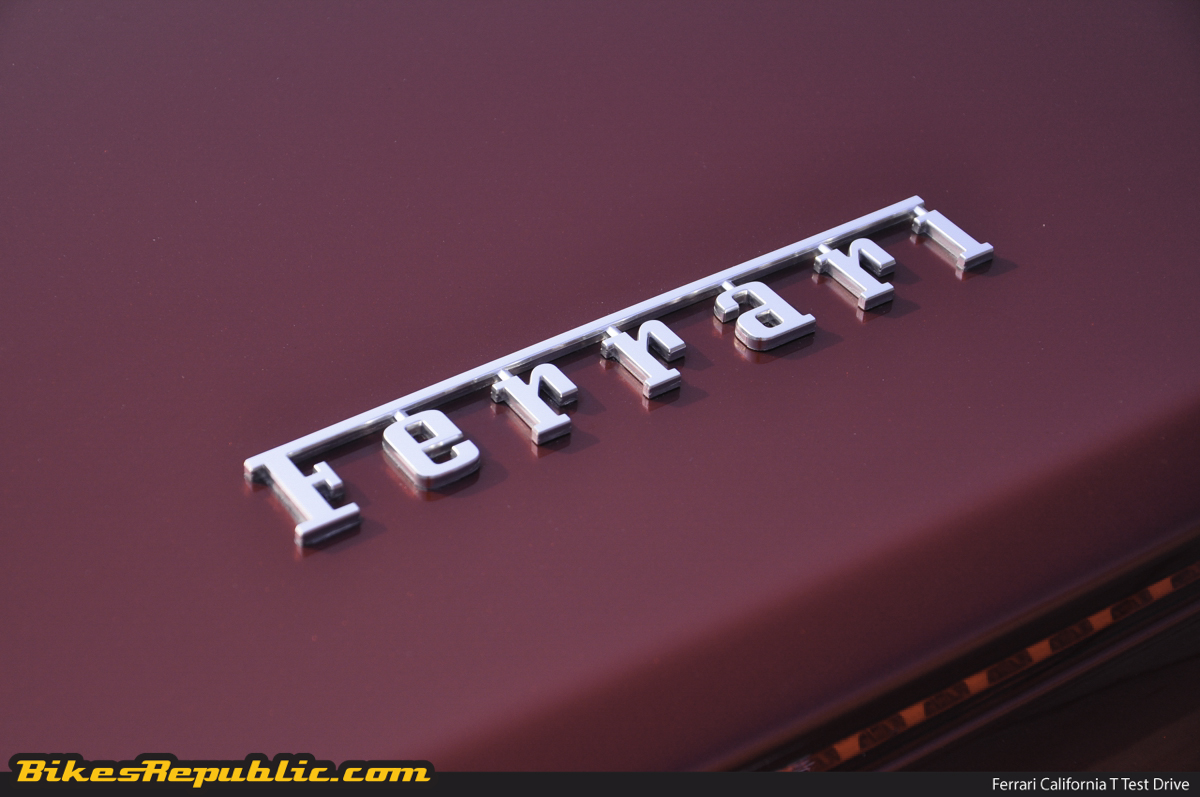
Our only gripe with the handling and driving dynamics was, naturally, the artificial feel of the electric steering system. Whilst it takes the fun out of driving to a certain extent, especially in a high performance car as such, one easily forgives it simply because it makes driving the Ferrari California T much easier when one isn’t in the right mood for an adrenaline rush.
Overall, the Ferrari California T does what it was designed to do brilliantly, and that being the offer of a luxurious and stylish open-top grand tourer with an exceptional level of performance for the road.
If you really wanted a proper rush and a test of your driving skills, then you are better off with the mid-engined 458 Italia or its new and turbocharged 488 GTB successor. However, you wanted a stylish grand tourer that is still capable of keeping up with said mid-engined sports coupes, the Ferrari California T sate this need brilliantly.
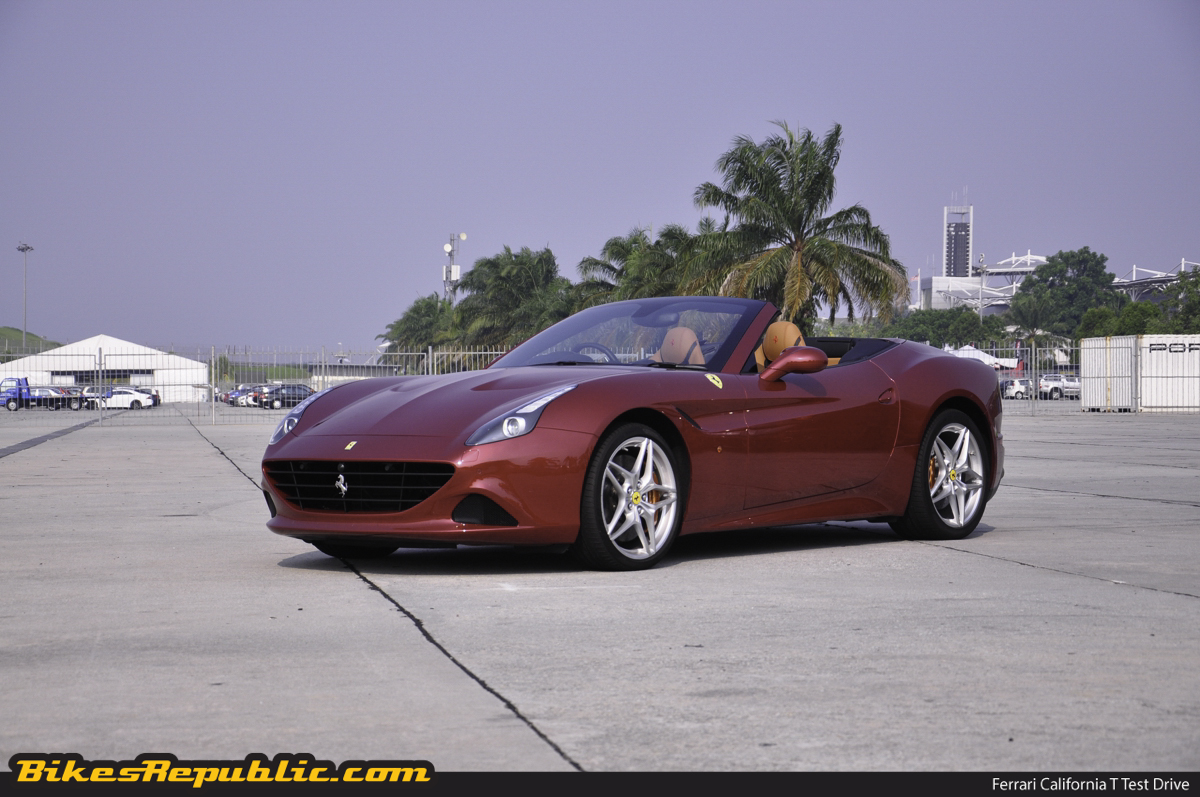
All of a sudden, the all new Mazda MX-5 roadster launched here not too long ago much more do-able at its RM226,376.82 price tag. Still, no bargain-priced alternative comes close to an Italian thoroughbred such as the Ferrari California T, and we end with the same wishful dream of owning one as much as you are.
| ENGINE |
|
| TRANSMISSION | 7-speed DCT (Dual-Clutch Transmission) |
| POWER | 552hp @ 7,500rpm |
| TORQUE | 755Nm @ 4,750rpm |
| 0-100KM/H | 3.6 second |
| TOP SPEED | 315km/h |
| FUEL ECONOMY | 10.5 litres/100km (claimed) |
| PRICE | RM888,800 (base price without duties, taxes, insurance and registration costs) |
| WARRANTY | Ferrari 7-year Scheduled Maintenance Programme |
| FROM | Naza Italia Sdn Bhd http://www.kualalumpur.ferraridealers.com/ |
FOR many purist BMW fans, the 2 Series Active Tourer and Gran Tourer MPV models are a little difficult to comprehend at first. The same feeling was felt when BMW first ventured into the premium SUV segment with its X Series. Success eventually came for the X Series as its capabilities proved itself over time, and BMW have now taken on a bigger challenge when both its new 2 Series MPV models.
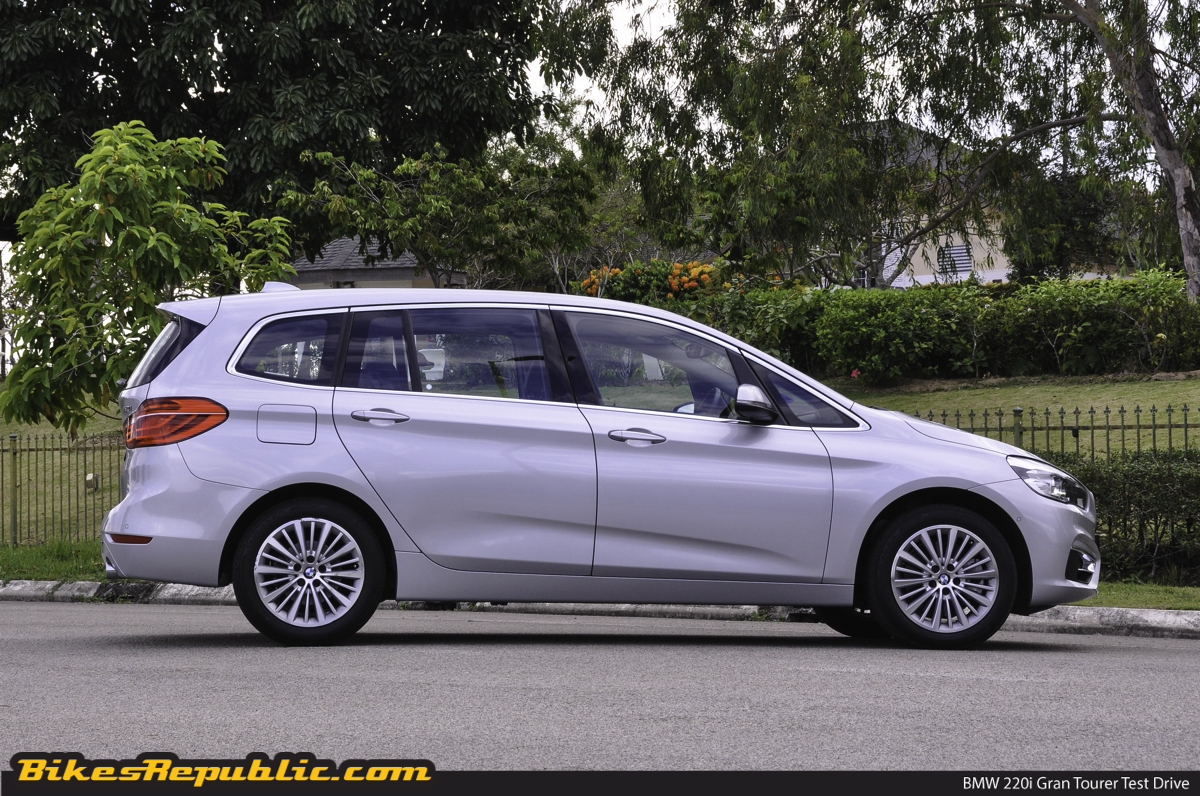
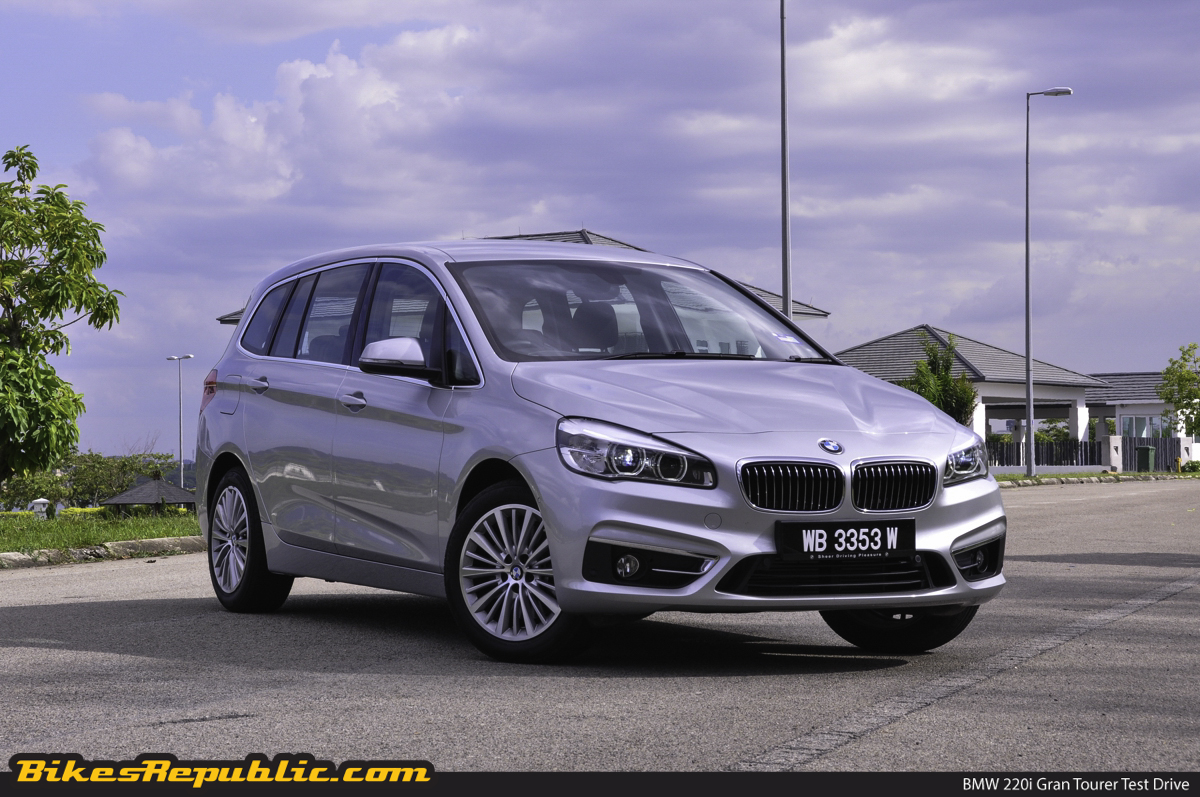
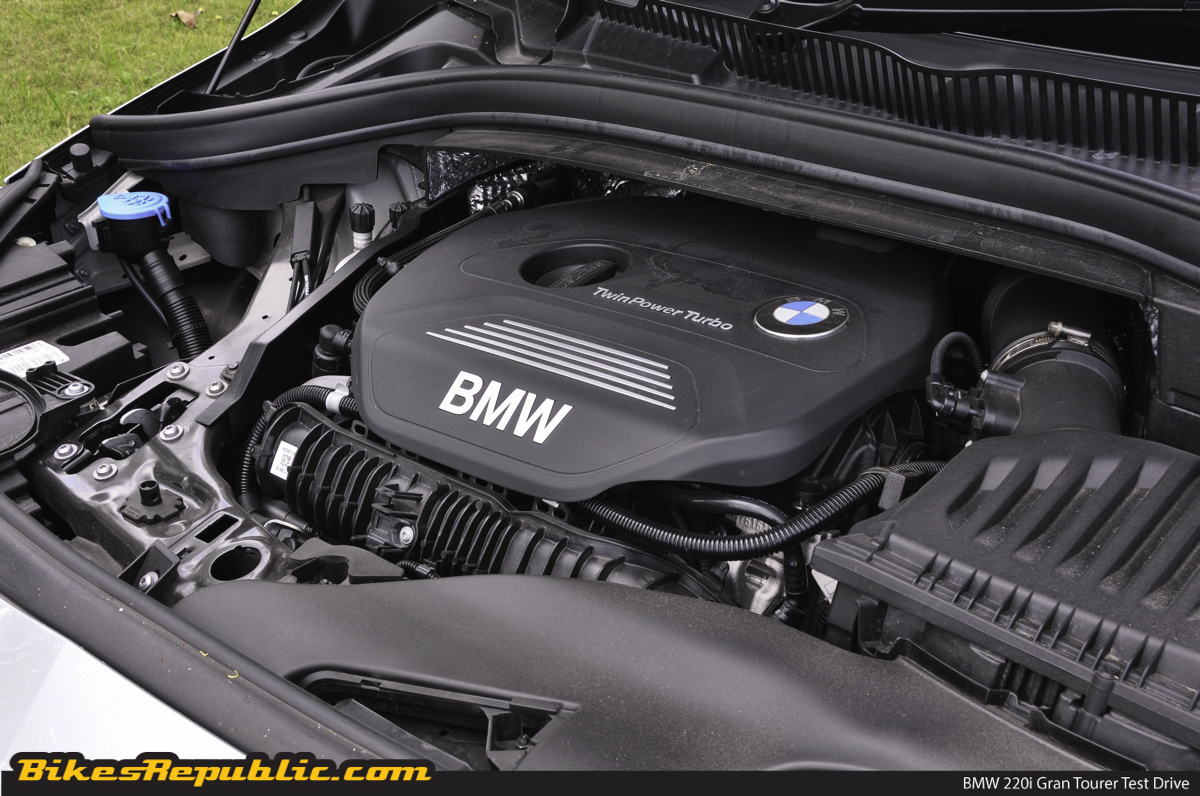
This being the range-topping 220i Gran Tourer variant, it gains further with a pair of foldable third row seats and an extended wheelbase. The extra seats means this MPV will ferry seven people on board, at the expense of cargo space of course, whilst the latter grants increased cargo space over its smaller 218i Active Tourer sibling. Thanks to the recline-able and slide-able second row seats, space in the third row seat is surprisingly adequate. Legroom here is a tad bit scarce for most adults, but it will easily accommodate children, making the 220i GT a sound choice for mid-sized families.
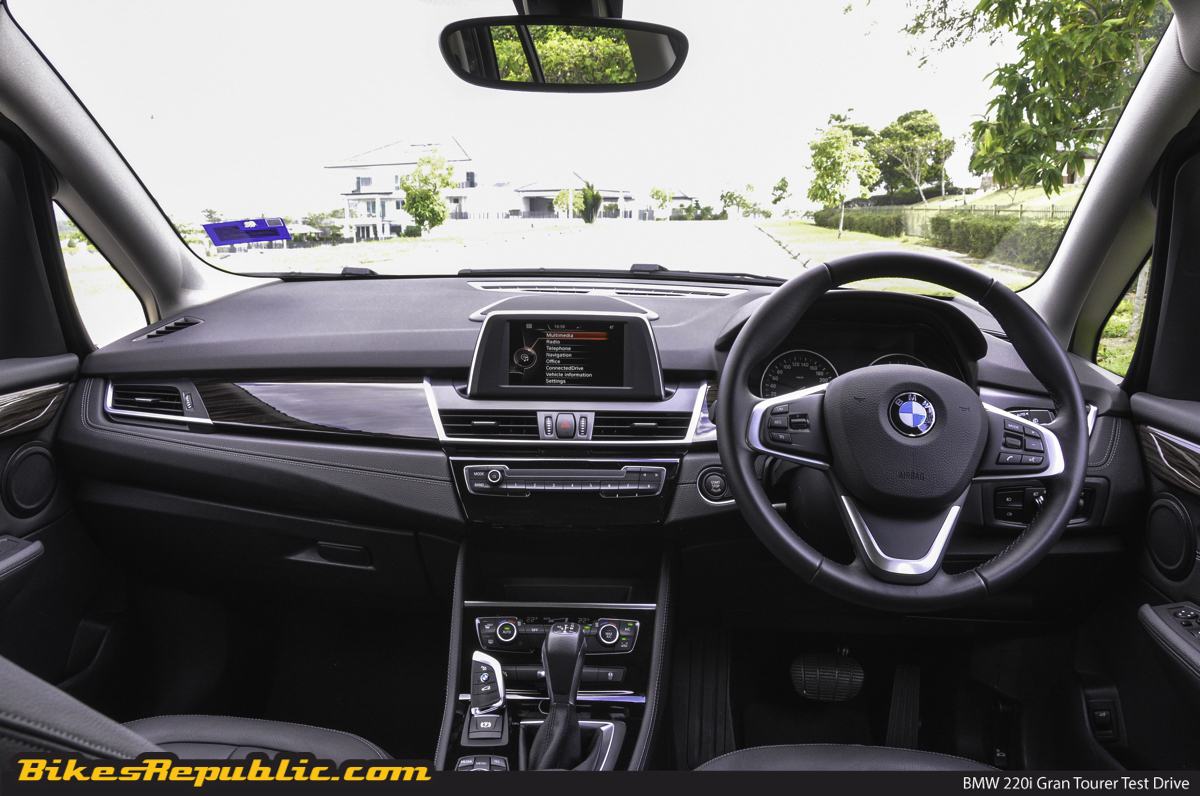
Adding further to this MPV’s overall practicality is the presence of strategically placed 12-volt sockets, which can be found in the dash, just below the second row air vents and in the boot. Needless to say, powering a multitude of devices is an easy task, making long trips less mundane especially if you have plenty of tech-savvy children. For us though, the most brilliant feature in the 220i GT’s convenience package comes from its semi-autonomous Parking Assistant feature that made side parking much easier, and we are sure this will be a hit amongst many ladies.
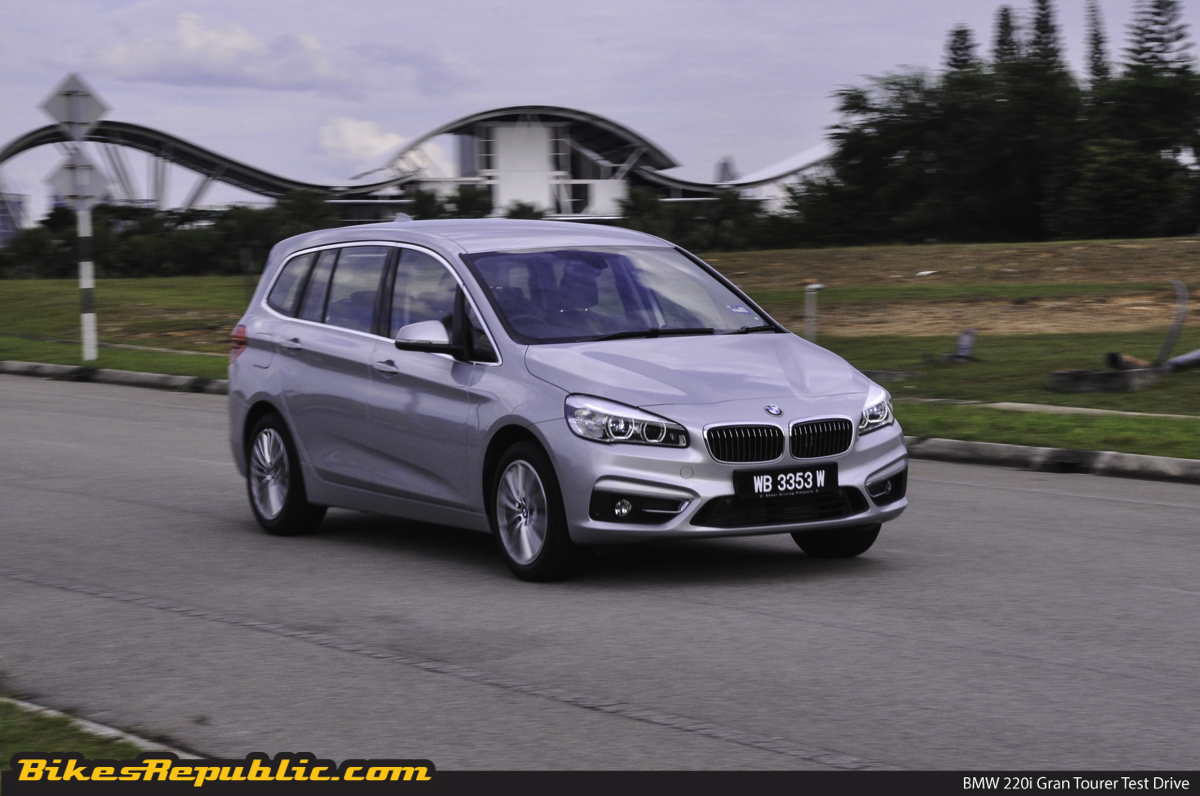
Overall, the powertrain felt surprisingly perky as torque is abundant in the lower and mid rev-ranges, effortlessly hauling the 220i GT’s claimed unladen weight of 1,615kg up to speeds. As a result, the 220i GT boasts a very respectable century sprint time of 7.6 seconds as well. As far as power delivery is concerned, it feels typically German in this aspect, which is something that many of its targeted buyers will undoubtedly appreciate.
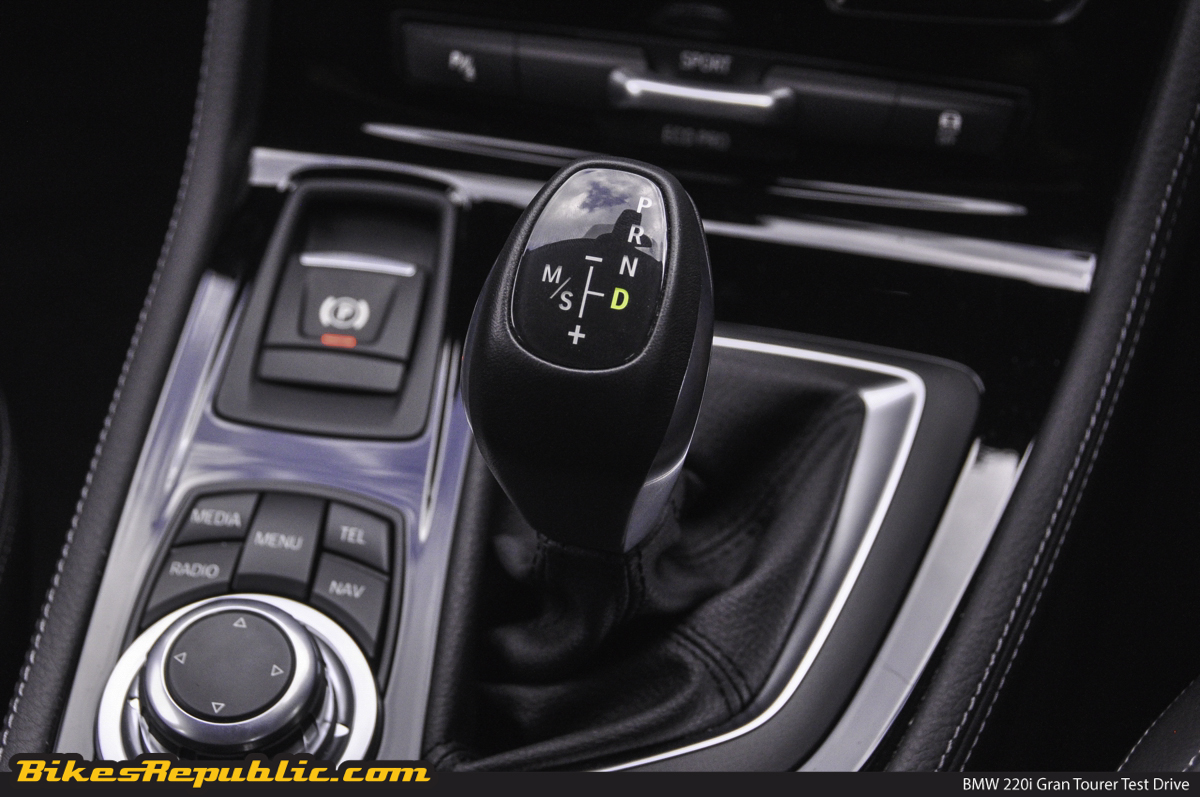
The other typically German trait with the 220i GT lies in its standard array of safety features. Besides ABS brakes and electronic stability control (ESP), the 220i GT’s cabin is lined with six airbags plus two ISOFIX childseat anchors in the second row seats. It may not sound like much against some of its slightly larger rivals, but family-conscious buyers will find it very adequate, providing great peace of mind should it be tasked as a primary family mover.
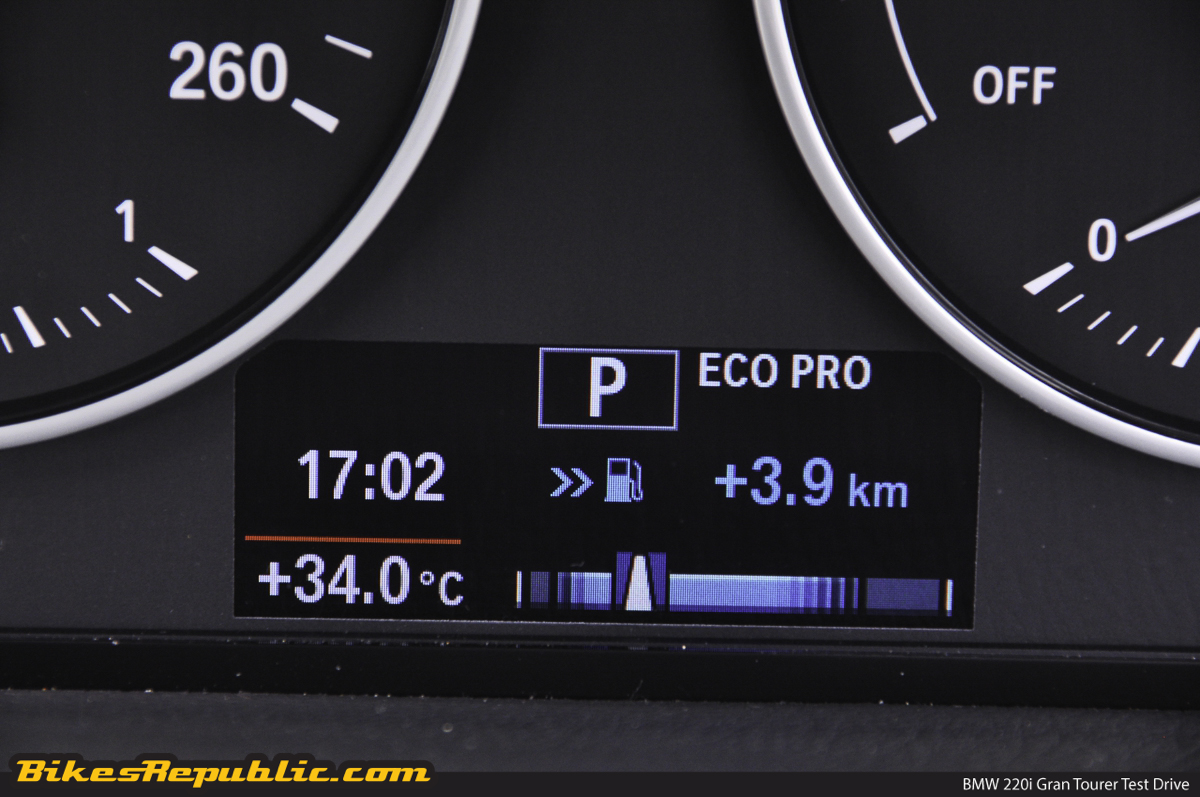
The only challenge left is the whether one is willing to meet the BMW 220i GT’s somewhat steep asking price of RM279,800 sans insurance costs. Thankfully, the inclusion of both a five-year, unlimited mileage warranty with a five-year or 100,000km free scheduled maintenance program in said price sees the 220i GT edge over its rivals greatly here. This is definitely the MPV that many soccer moms (and dads!) would want to have.
| ENGINE |
|
| TRANSMISSION | 8-speed Steptronic automatic |
| POWER | 192hp @ 4,700RPM |
| TORQUE | 280Nm @ 1,250 – 4,600RPM |
| 0 – 100KM/H | 7.6 seconds (Claimed) |
| TOP SPEED | 221km/h (Claimed) |
| FUEL EFFICIENCY | 6.2 litres/100KM (Combined, Claimed) |
| CO2 EMISSIONS | 144g/km |
| PRICE | RM279,800 (OTR without insurance) |
| WARRANTY |
|
| FROM | BMW Malaysia www.com.my |
Ducati has released the first out of of six promo videos which Ducati hopes will show how capable the Multistrada 1200 Enduro on any kind of terrain.
The first video, called ‘Enjoying off-road adventures’, is part of ‘The wild side of Ducati’ series which will also promote other models.
From what we can see, the promo video shows the Multistrada Enduro tackling motocross tracks and enduro trails at high speed in some exciting locations.
With five more videos to go, Ducati said that each promo will be released once in every two weeks.
Ducati said, “Each of the three-minute episodes is emotion-packed and features highly spectacular images which recount the real essence of the Multistrada 1200 Enduro: a bike conceived to travel and be unstoppable on any kind of terrain.”
First seen at the 2015 Tokyo Auto show, rumour has it that the Honda Concept CB is destined to make it to the production line as an updated CB1100 in the near future.
The concept, which was Honda’s only concept at the Tokyo Motor Show, is expected to take the retro-bike fight to machines like Triumph’s new Bonneville in the future.
Featuring a heavily sculpted fuel tank, new aluminium-effect side panels, new air-box covers with chrome flashes, a new seat and different castings for the foot-peg hangers, the Honda CB concept also comes with generous dose of chrome on the instruments and headlight, and the rails under the pillion seat are changed from aluminium castings to chrome tubes, too.
Under all that, the frame and engine are same as the CB1100 EX, where the motor is already Euro4-compliant, despite all other air-cooled four-cylinder engines having long since been abandoned by their makers thanks to difficulties meeting emissions rules.
Honda’s official line on the Concept CB is that it’s a ‘customised concept model’ intended to show what could be achieved by modifying an existing bike, but the components used look much more like production parts than anything a customiser would be likely to opt for.
Source: www.visordown.com
© Copyright – BikesRepublic.com 2023 Trademarks belong to their respective owners. All rights reserved